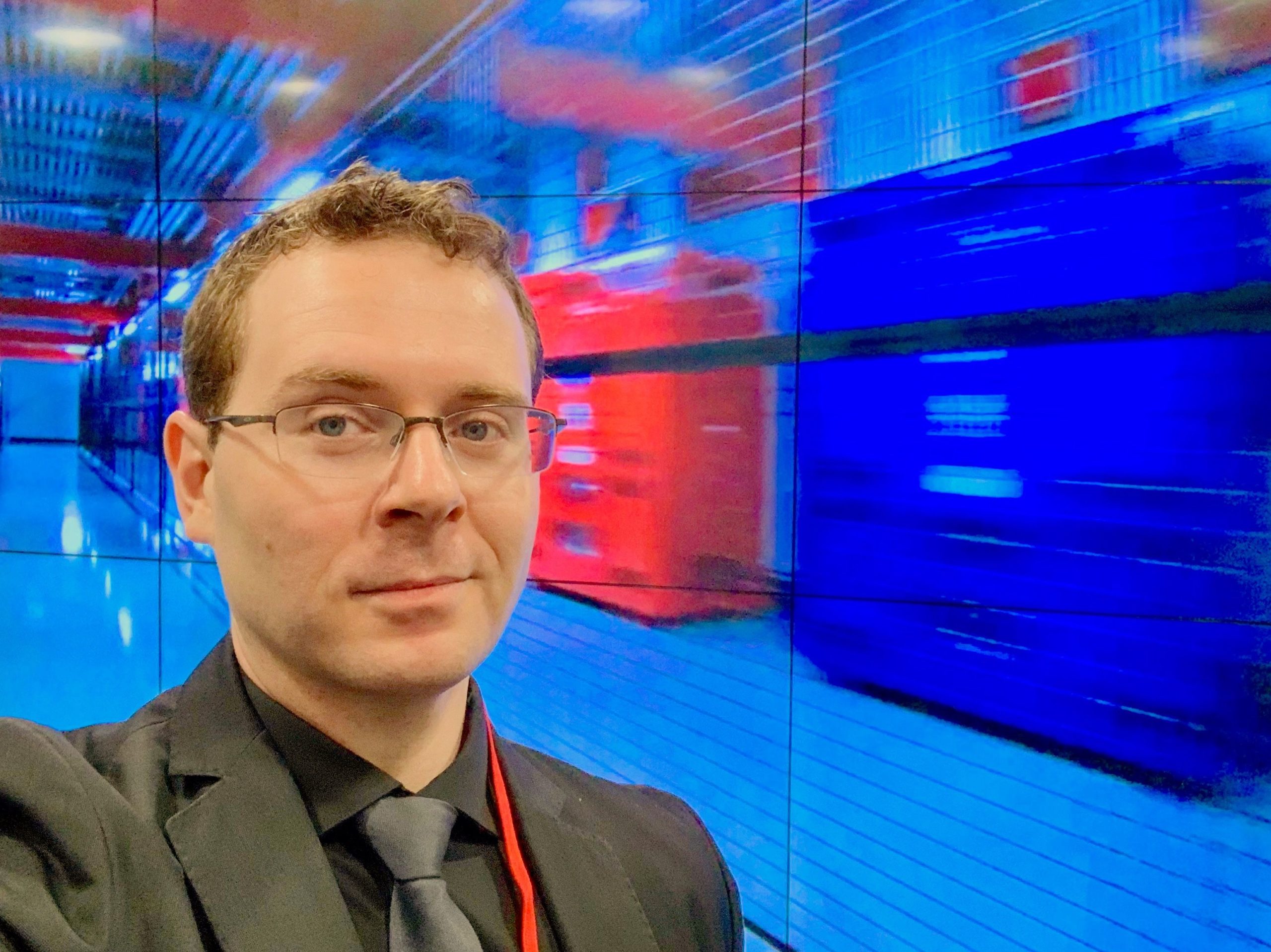How the Pandemic Has Changed the Way You Recruit the Next Generation of Data Center Leaders20 min read

Working with the iMasons organization and getting the amazing chance to head up the millennial and Gen Z committee has given me a really unique perspective into the future leaders of our industry. I was excited to see so many new ideas already being discussed, I loved how the next generation knew they had a remarkable voice, and I was really looking forward to interacting with the builders of our digital future.
Then, everything stopped. And a lot of plans were impacted.
Understanding Gen Z
Already, Gen Z accounts for 61 million people in the U.S., a number that’s already larger than Generation X and two-thirds the size of the baby boomers. And, this generation was to become the first real balance between digital and interpersonal interactions. A study from Robert Half indicated that the preferred environment was actually to collaborate with small groups in office settings.
The least preferred? Working off-site as part of a virtual team. Basically, almost everyone’s life at the moment.
As strange as it might sound, Generation Z would much rather talk to you in person than over a device. Seventy-four percent of Generation Z prefer to communicate face-to-face with colleagues.
Of course, it’s not really fair to group all Gen Z’s into a research study or two. That’s why it’s so critical to actually talk to them and understand their values and how all of this is impacting them. Similarly, some professionals in the technology space and specifically those in recruiting, are already changing the way they communicate with both companies and young talent.
One of the people I spoke with, Tom Welke, is the definition of relationship management. Yes, he is a recruiter. But he never ‘recruits.’ He builds relationships with people. It’s an entirely different kind of approach to truly understanding people and, most of all, talent. Much of it begins with empathy and, as Tom would say, karma.
“The entire process of finding talent has completely changed over the past four years,” says Tom Welke, VP, and Partner at RSM Solutions. “And, in the past four months, it’s probably changed even more. As a person trying to find good talent, you have to shift the way that you have conversations with young people, and really understand the value they can bring to an organization. You need to be creating relationships to understand the person and their capabilities.”
Tom brings in a unique perspective into the Gen Z hiring process. He is from an older generation, but he takes the time to understand people. Over the years that I’ve known him, Tom is probably one of the best at it. He also knows how to bridge the conversation between young talent and the organizations trying to hire and retain them.
I also spoke with a few high school and college students who fall into the Gen Z category. Although many are staying optimistic and busy, it has definitely altered many plans. Some were planning on traveling abroad, some had internships that were canceled, and some are taking a ‘gap’ year away from college, and some recent high school grads are already looking to enter the job market. Remember, many young people are looking at options outside of traditional secondary schooling. Looking at some recent trends, 75% of Gen Z say there are other ways of getting a good education than going to college. Only 11% of Gen Z’ers stated they’d take on debt to cover the costs of college or higher education.
They did, however, give me some insights into what companies can do to gain their attention. Specifically, they touched:
- Where possible, create small meet-up groups to learn more about a company, what they’re doing, or maybe an exciting project.
- Create diversity, equality, and inclusion programs that have real action and meaning. Involve young people in the community in these programs and outreach initiatives.
- Support STEM, and be loud about it!
- Engage with high school administration to come in as guest speakers during a virtual class to answer industry questions.
- Create micro-learning content that’s brief, educational, and talks about a company, project, or technology.
- Bring young people in on the conversation when possible. (This is important, we’ll touch on this again in a minute.)
- Just be understanding that this is a difficult time for a young person.
Approaching Gen Z
If you’re a technology leader, or a corporation looking to retain or recruit the next generation of young talent, there are some excellent points that I’ve picked up from my conversations and research.
In speaking with Tom Welke, he pointed out that traditional work environments rarely bring young people in to meet with higher-level executives. However, as Tom puts it, “Nothing puts a bigger smile on the face of a 59-year-old CIO than to bring someone on that aspires to take on more tasks and be willing to learn more. Every senior executive knows that there is a 70/30 rule in talent. That is, the top 30% add about 70% of the value to the company. The point that many still overlook is that the top 30% can come from almost any age group.”
This was also something echoed by the younger community. That is, they want to meet the leaders that will be working with them. And they want their ideas to be heard that will hopefully bring value to the company.
Another major point that recruiters and hiring managers forget about is that you really are working with people. You’re not just trying to fill a role; you’re not only trying to get that number. The most successful recruiters are relationship experts that, empathically, understand people, what drives a person, and how they’ll be successful and motivated. “If you are not managing your team as real live people, they’re simply going to go and look for somewhere else to work,” Welke added.
So, if you’re looking for talent and want to get the best Gen Z’s in the market, here are some final pieces of advice Tom offered:
- Do not use the same job descriptions you have used for the past several years.
- Do not ‘spray and pray’ and do not ‘post and pray.’
- Specifically target candidates on LinkedIn or Indeed. Again, do not use the same message for every candidate.
- The job you post should not be the ‘laundry list’ job description with 100 bullet points. Rather, focus on talking about who you are as a company in genuine terms, who the candidate will be reporting to, and what kind of person that manager is. Finally, simply talk about the 4 to 5 ‘got-to-haves’ in a job description and why they are essential.
Finally, it’s important to remember that many candidates will simply visit your website or apply online. This will often be there very first interaction with your company. How smooth is that application process right now? How many clicks, screens, and uploads does the candidate have to jump through to submit an application? Complex and fragmented onboarding systems will absolutely turn off young talent, and probably others as well. Be sure to invest in good recruiting practices as well as good systems to support your recruiting and HR processes.
As a last parting thought, one of the most common points that I heard from both Gen Z and successful recruiters of young talent was this – be a good listener. Empathy and asking questions can help you understand a person and what will ultimately drive them. Empathy helps build and strengthen relationships while the person knows that they are both valued and being heard.
_____________________________________________________________________________________
To learn more about recruiting the next generation of data center leaders, check out our recent webinar titled, Understanding a New Workforce: How to Recruit and Retain the Next Generation of Data Center Professionals.
Airflow Management Awareness Month 2019
Did you miss this year’s live webinars? Watch them on-demand now!
Real-time monitoring, data-driven optimization.
Immersive software, innovative sensors and expert thermal services to monitor, manage, and maximize the power and cooling infrastructure for critical data center environments.
Real-time monitoring, data-driven optimization.
Immersive software, innovative sensors and expert thermal services to monitor,
manage, and maximize the power and cooling infrastructure for critical
data center environments.

Bill Kleyman
Industry Analyst | Board Advisory Member | Writer/Blogger/Speaker | Contributing Editor | Executive | Millennial
Bill Kleyman is an award-winning data center, cloud, and digital infrastructure leader. He was ranked globally by an Onalytica Study as one of the leading executives in cloud computing and data security. He has spent more than 15 years specializing in the cybersecurity, virtualization, cloud, and data center industry. As an award-winning technologist, his most recent efforts with the Infrastructure Masons were recognized when he received the 2020 IM100 Award and the 2021 iMasons Education Champion Award for his work with numerous HBCUs and for helping diversify the digital infrastructure talent pool.
As an industry analyst, speaker, and author, Bill helps the digital infrastructure teams develop new ways to impact data center design, cloud architecture, security models (both physical and software), and how to work with new and emerging technologies.







0 Comments